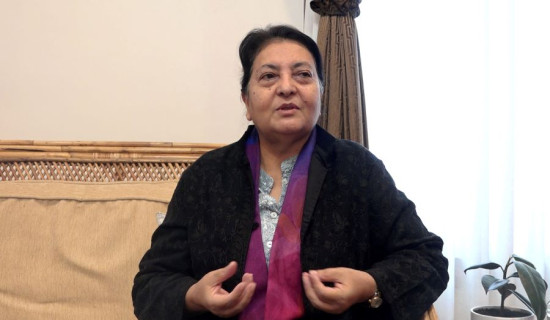- Friday, 2 May 2025
Preventing Fall Injuries
Accidents like stumbling on a rug or slipping on a wet floor can cause serious injury and can change the course of a life. Falls result in a broken bone, which thousands of older adults experience each year throughout the world. Especially for older people, a broken bone may initiate more serious health problems and can lead to long-term disability.
Older people with long-term health conditions are more vulnerable to falls, however, anyone can have a fall. Falls are often a high-impact, high-cost health concern for older adults. Studies have shown that falls are the leading cause of fatal and nonfatal accidents for those ages 65 and older. Women in older age groups were at the highest risk for both falls and injuries. At the same time, falling once doubles the chances of falling again.
Risks
A fall can have an effect lasting for a day, week, or even lifelong. Injuries resulting from a fall can happen anywhere and to anyone. It occurs suddenly and often is frightening and can cause severe pain and injury. Falls are the most common type of accidental injury second only to road traffic accidents. However, a fall is not a type of injury, it is a cause of injury.
Often overlooked, falls are one of the common causes of unintentional injury. Studies have shown that around 1 in 3 adults over 65 and half of people over 80 will have at least one fall every year. Most falls may not result in serious injury. However, broken bones are commonly seen among people who suffer from a fall. It has psychological consequences as it may cause the person to lose confidence, become withdrawn, and feel as if they have lost their independence.
Globally, around 684, 000 individuals die from falls of which over 80 per cent are in low- and middle-income countries. Over 60 per cent of those deaths occur in the Western Pacific and South East Asia. However, death rates are the highest among adults over the age of 60 years throughout the world (WHO, 2021). It is estimated that 37.3 million falls require medical attention each year resulting in over 38 million DALYs (disability-adjusted life years) lost each year, and resulting in more years lived with disability than other accidental injuries. Adults older than 60 years of age suffer the greatest number of fatal falls (WHO, 2021).
There are risks associated that may increase the likelihood or severity of a fall including older age, gender, cold weather, and underlying medical conditions. Older adults have the highest possibility of serious injury and/or death from a fall and the risk increases with increasing age. Both genders are at risk of falls. However, it has been reported that males are more likely to die from a fall, while females suffer more non-fatal falls.
The incidence of falls increases in cold weather as cold weather places extra demands on our bodies. The cold makes our muscles perform much less effectively resulting in slower normal reaction time, and more prone to injury. Most injuries are seen in muscles, ligaments, and tendons and are at a higher risk of sprains, strains, pulls, and tears.
The body becomes weakened due to age or illness and causes a restriction in mobility that increases the likelihood of fall injury. Underlying medical conditions, such as neurological, cardiac or other disabling conditions increase a fall injury. Vitamin D deficiency may leads to weakened bone and is associated with a higher incidence of a fall injury. Similarly, the use of certain medications that may cause drowsiness, dizziness, or confusion increases the chances of a fatal fall injury.
There are other risk factors such as impaired vision, inadequate footwear, and environmental condition triggering hazardous or dangerous conditions that cause slip and fall, or trip and fall accidents. However, most falls are caused by a combination of risk factors. The chances of falling and sustaining an injury increase with an increasing number of those risk factors.
Prevention
Falls are preventable. There are some simple approaches that considerably decrease fall incidence. One of the most important preventive methods is to practise strength and balance exercise that makes our legs stronger and improve balance. A kind of balance exercise such as Tai Chi has been shown to improve balance. Another approach is to have regular eye checkups and update eyeglasses as needed. Vitamin D supplements are sometimes needed for keeping bones healthy, particularly for older adults and it is prudent to consult a healthcare provider for the same.
Simple readjustments in the surrounding environment in our home and bathroom can have protective effects. It is suggested to make the home safer by putting railings on both sides of the stairs, adding grab bars inside and outside of the tub or shower and next to the toilet as well as using non-slip mats in the bathtub and on the shower floors. It is obvious that adequate lighting and keeping items that are used often in easily reachable cabinets without using a step stool help in preventing falls.
(Dr. Lohani is the clinical director at the Nepal Drug and Poison Information Centre. lohanis@gmail.com)

















